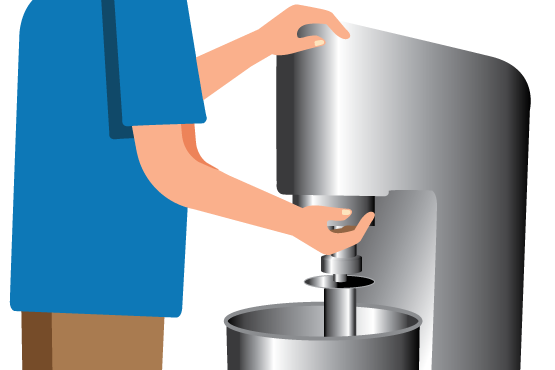As the owner or manager of a pizzeria, you already know that your business operations and customer experience depend heavily on your kitchen equipment. To make the most of your appliances, you must make sure they are in perfect operating condition.
Most pizzerias use many different types of kitchen equipment, ranging from large pizza ovens to mixers, and refrigerators to sheeters. While all appliances play essential roles in your restaurant's success, maintenance of high-value equipment is critical to your operations. If a piece of equipment, such as a mixer or your pizza oven, suddenly fails, it can bring your entire operation to a standstill.
Maintenance of equipment is the best way to keep your pizzeria up and running. Below are 3 important tips to upkeep your equipment. Implement these tips, and you'll find peace of mind.
1. Implement Preventive Maintenance
Preventive maintenance is a maintenance strategy that averts unexpected equipment breakdowns. It is a proactive approach where you don't wait for problems or costly failures to happen. Instead, you run routine maintenance tasks to keep your equipment in ideal operating condition.
Using reactive maintenance for low-cost pizza preparation supplies is typically acceptable. But for the expensive equipment or appliances on which your operations depend, you must have preventive maintenance in place.
Preventive maintenance will keep your high-value equipment in good working order, prolong its life expectancy, and reduce the likelihood of costly repairs or replacements.
For example, a mixer is key to any pizzeria's operations, because you just can't make dough without it. Preventive maintenance for a mixer would include the following activities:
- Clean the mixer as per the intervals and procedures described in the user manual.
- Create a schedule for lubrication for the bowl's vertical movement and the guard's spinning areas, and stick to the schedule. Again, turn to the manufacturer's recommendations for proper lubrication.
- Inspect dipsticks for oil, and address possible failure points.
- Monitor the bowl clearance for uniformity and to keep the agitator from hitting the bowl's bottom.
Achieving success with preventive maintenance requires proper planning, discipline, and record keeping.
Planning: Start with crafting comprehensive maintenance plans for each piece of high-value equipment. Get the right people on board, set up maintenance goals, and identify and tag high-value appliances.
Discipline: Stick to your maintenance plan, train equipment operators, and reinforce the importance of maintenance throughout your organization.
Record keeping: Collect maintenance data, such as equipment maintenance history, and keep records on future maintenance to achieve consistency.
2. Follow the Manufacturer's Recommendations
Many people disregard the importance of the user manual and often throw it away. By doing so, you are increasing your risk of equipment failure.
To prevent unexpected business downtime, revenue loss, and poor customer experience, your staff must follow the manufacturer's instructions. These instructions come in the form of a user manual with each appliance. The manual describes the standard operating procedures based on the minimal operating condition.
When creating your preventive maintenance plan, make sure the user manual is your first go-to source for necessary information. In fact, the user manual serves as a pillar for a solid preventive maintenance plan.
Be sure to encourage your staff to set up and operate the product according to the manufacturer's instructions. Operators and technicians can turn to the manual to get answers to their operating and troubleshooting questions.
Keep in mind that if the instructions are not followed, the equipment warranty may be null and void. The user manual also contains safety information, which can prevent possible hazards that may otherwise result if a piece of equipment is incorrectly operated. This means that following the manufacturer's instructions can help you comply with safety regulations as well.
Let's take the example of a standard commercial pizza oven. Information in the user manual for this piece of equipment typically covers the following areas:
- Safety information and warnings
- Description of equipment
- Preliminary checks and inspections
- Installation procedure
- Exhaust design
- Power system overview
- Manufacturer's responsibility
- Oven control components
- Connection of power supply
- Standard operating procedures/steps to operate
- Troubleshooting
- Fundamental maintenance tips
These instructions can be very helpful for your staff and play a key role in preventing injuries, costly replacements, and business downtime for your pizzeria.
3. Train Your Staff
Following the manufacturer's instructions takes us to staff training. While you may emphasize the importance of the user manual across your organization, success cannot be achieved without training your staff.
Encourage your operators and maintenance staff to read and follow the user manuals. Many high-value appliances also come with training videos that you can show to your staff.
It is a good idea to organize training for your operators and maintenance staff as part of your organizational culture. Doing so will remind them of how they can make a difference. The knowledge and skills gained during training will assist them in using equipment properly and diagnosing, reporting, and solving problems proactively.
For example, training for operating and maintaining a pizza oven would generally cover the following topics:
- Identification of operating challenges
- Steps to operate the pizza oven in accordance with the manufacturer's instructions
- Cleaning and daily upkeep of the oven's exterior
- Brushing and mopping debris
- Lubricating parts where applicable
- Troubleshooting and identifying problems
- Who to report a problem to
- How to report a problem
Never forget that untrained staff are more likely to trigger and prolong downtime incidents. In fact, lack of operator training is the second most common reason for equipment failure, after a hardware fault. But with proper training, your staff is going to be your first line of defense against unexpected breakdowns and downtime.
Posted on Wed, Feb 12, 2020 @ 07:02 AM.
Updated on July 26, 2022 @ 5:06 PM PST.

